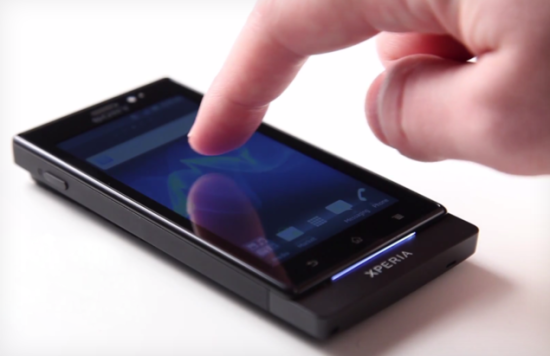New Sony Xperia Sola Has A Touchscreen You Can Use Without Touching
Touchscreen phones revolutionized the mobile phone industry. Think about it. When was the last time you saw any remotely modern phone that didn’t have a touchscreen? Sure, we can make our touchscreens bigger, or look better, or even flexible but touchscreens all have one thing in common: You have to touch them. Not anymore. Sony’s new Xperia Sola has a touchscreen with what it calls “Floating touch” or in other words, the ability to interact with its touchscreen by hovering your finger over it. The Sola has a “hoverscreen” if you will.
Now it’s not that you don’t also touch the Xperia’s touchscreen, floating touch is only a part of the intended interface, but it does seem to provide the opportunity to make touchscreen interface a little bit more like the cursor-based interfaces most of us grew up with. Touchscreens have never been cursor friendly because your finger is the cursor, so if there was one, you wouldn’t be able to see it anyway, but the downside is that your fingers (my fingers anyways) tend to be somewhat big, a little clumsy, and annoyingly opaque. Floating touch can dance around these issues a little.
Floating touch doesn’t actually give you a cursor or anything, but it does lend touchscreen navigation some of the precision cursors-natigation brings to the table. The are plenty of potential applications, but the main one shown so far is the ability to highlight links by hovering, something that would make the sometimes painful task of hitting the correct link in a tightly packed list, much, much easier.
Traditional touchscreens work by mutual capacitance, which is why you have to touch them, and also why you have to touch them with your finger. While the Sola touchscreen has mutual capacitance, it also has a a separate self capacitance sensor, which is what lets it pick up input that’s up to 22mm away from the screen. Android 4.0 does include API for hover input, but support has to be added in by app developers, and unless this technology gets a little more widespread, floating touch compatibility might be spotty. I can see how it could be annoying, to have interactions when not touching the screen, but so long as the input is only used for passive interaction like highlighting and selection, it seems bound to do much more good than harm. At worst, it’s just a gimmick.
It’s clear that Google is getting behind the feature, but it may live and die by third party app development, making this a bit of a catch 22 situation. That being said, I really hope it’s given an opportunity to reach its full potential because I think this technology could solve the most persistantly annoying part of using a touchscreen: Covering up the screen with your fat little fingers. If it does spread, it’ll probably take a while, but if you ask me, it can’t happen fast enough.
(via The Verve)
- Now just get me some tixels
- Or one of these hand-mice gadgets
- But I’d settle for playing with the OmniTouch projector interface
Have a tip we should know? [email protected]
